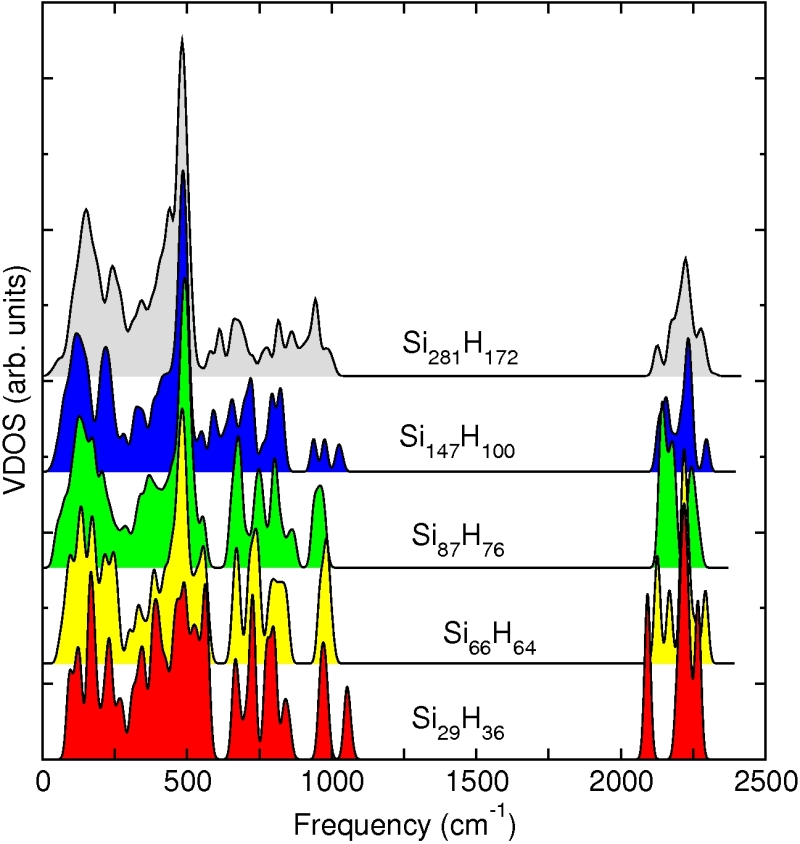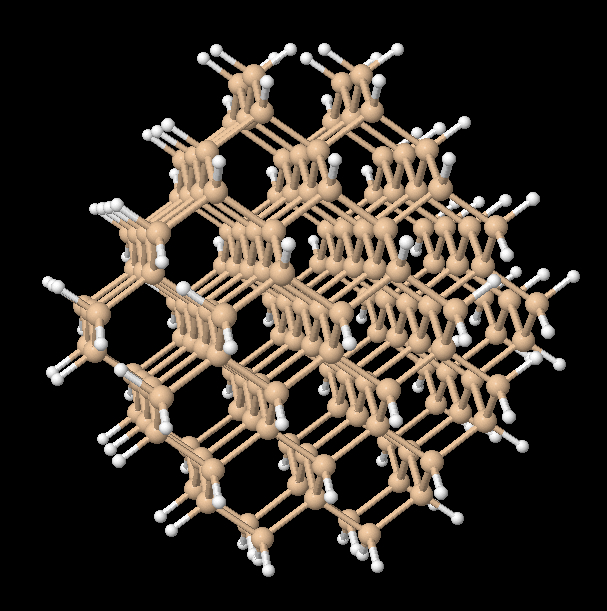Optical Properties, Vibrational Dynamics and Raman Spectra of Semiconductor Nanocrystals
Collaborator: James R. Chelikowsky, UT Austin
Raman spectroscopy is an ultimate tool used in condensed matter physics and chemistry to study vibrational properties of systems with interfaces [1]. Vibrational modes can be identified with a particular chemical bonding structure of interfaces, which is hardly accessible with other experimental techniques. However often, many details captured by the Raman data cannot be identified, because one does not have sufficiently detailed understanding of the scattering processes. Particularly, nanoscale confinement effects have not been examined in detail at nanoscale [2]. Though, the role of nanoscale confinement effects, like the ``quantum confinement'', as a function of size have been shown to be of great importance [3,4,5].
For nanocrystals or nanowires embedded in a solid state matrix such as Si embedded in amorphous SiO$_2$, the roles of size dependency and interfaces become very important [6]. The matrix can also introduce strain at the surface of embedded nanocrystal, which can be under compression or tension, depending on local relaxations allowed by the environment. In principle, Raman measurements can provide information about such details. However, effects of the strain have to be isolated from other effects, one of which is the ``phonon confinement''. The latter effect stands for a systematic red shift of characteristic Raman modes as the nanoparticles become smaller and smaller [2]. It was already used to measure dimensions of embedded nanoparticles, but again, undefined properties of the interfaces make information obtained from the ``phonon confinement'' ambiguous [7].
The effect of ``phonon confinement'' was initially explained as an instrumental setup effect [2]. However, recent theoretical studies have suggested that ``phonon confinement'' is an intrinsic property of the nanocrystal. Parameterized model calculations for vibrational spectra of Si nanocrystals have yielded a clear red shift of the Raman active modes observed in the experiments [8,9]. In contrast, we have performed preliminary first-principles calculations of the vibrational dynamics of Si nanoparticles with different sizes, and opposite to experiment and model calculations, we found a blue (instead of red) shift of the Raman active optical modes. Perhaps this is not surprising because our work is for free supported nanocrystals. Thus, ``phonon confinement'' is boundary dependent in theoretical calculations, which opens a possibility to reveal the role of boundary conditions and interfaces. To address this problem we wish to collaborate with Molecular Foundry scientists.
In this project, we perform theoretical calculations in order to examine and isolate contributions from the interface strain (local relaxations) and phonon confinement in widely available Raman data for embedded nanocrysals. More specifically, the goal of this project is to investigate vibrational dynamics of various nanocrystal and nanowires in free and confined conditions. We initially examine Si systems and extend our work to compound semiconductor nanowires and nanocrystals. These calculations allow us to quantify the role of quantum confinement in Raman spectra and its dependence on the boundary conditions defined by the interfaces.




